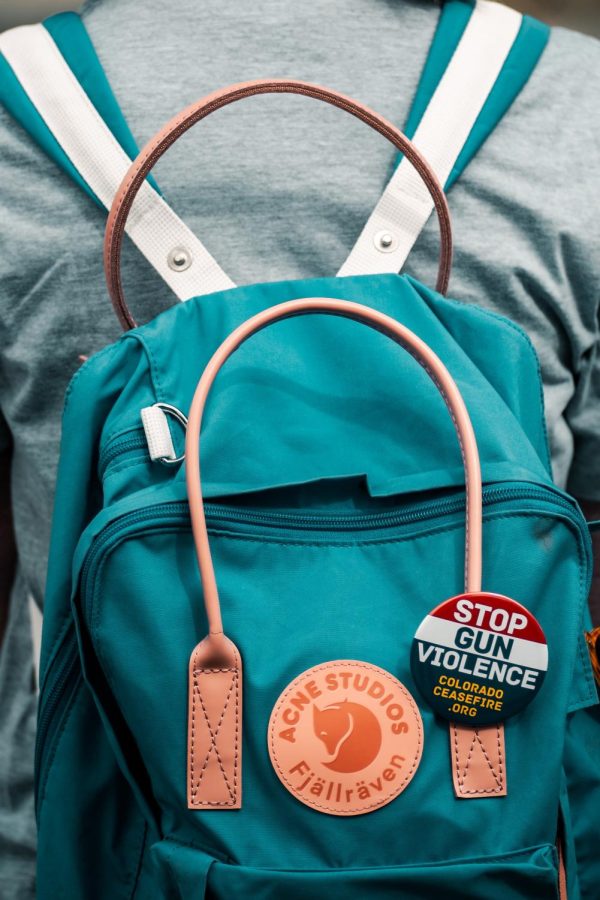Students Grapple with School Safety Following Wave of Mass Shootings
Photo by Colin Lloyd
Diablo Valley College student Holly Anderson comes to campus with everything she feels she needs for the day: laptop, notebooks, writing materials, lunch. In light of all the mass shootings that have filled headlines in recent months, she brings something else with her as well: a kevlar-plated backpack.
“There’s only so much I can do to make myself feel safer in school, so I take what I can get,” said Anderson, who tends to work in the back corner of the school library where she can keep a watchful eye with her headphone volume turned low.
These are some of the steps Anderson said she takes to try to lower her chance of becoming a victim of gun violence. She has family friends who have been victims of a mass shooting, and their stories made her painfully aware of how quickly innocent people can have their lives changed by gun violence.
It’s not just at school where Anderson takes these precautions. These days, she also brings her bulletproof Jansport with her to large public spaces like shopping malls, movie theaters and concert venues if they allow it.
“At the end of the day it’s just safer to keep around,” she said.
Anderson’s fears are becoming more and more common among young people—particularly after more than 70 mass shooting events occurred nationwide during the first six weeks of the year. In California, recent mass shootings in Half Moon Bay and Monterey Park took the lives of 18—shining a spotlight on the crisis of gun violence in our state, which has stricter gun laws than most.
In an interview prior to the Feb. 13 mass shooting at Michigan State University, which killed three students and injured five, DVC student Alex Williams appeared to express a lack of concern about the threat that a mass shooting could occur on campus. While aware of the possibility, Williams said he isn’t scared to be at school.
“It really doesn’t feel like there’s much threat on a community college campus,” he said.
But after the tragedy at MSU, Williams’s attitude shifted.
“If a shooting can happen on a university campus like that, what’s stopping it from happening here?” he asked.
As a result, Williams said he has started to change some of his habits. For example, since the Michigan shooting, he has reduced how often he does his work in large open spaces on campus.
DVC Police Lieutenant Kathryn McDonald explained that having more uniformed officers on site helps reduce the chance of gun violence on campus. It can also help calm nerves among the campus population.
“What’s important is that we’re making ourselves known,” Lt. McDonald said.
In addition to routine officer patrols at DVC, student workers also act as police aides to assist with campus security. Those aides help keep an eye on suspicious activity and have a direct line with officers to respond to any situation that arises.
While the aides cannot directly respond to incidents, McDonald said, their presence can help identify threats to campus and speed up how quickly police are able to respond.
Students seeking additional information about campus safety can refer to DVC’s safety page online or check out the emergency procedures pamphlet posted in buildings and classrooms around campus.
Lt. McDonald said if students have questions or wish to discuss concerns, they can come to the police services building or “can always give us a call” at 925-686-5547.
“As a nation our future on gun control is uncertain,” Anderson said, “but it makes me feel safer knowing our campus takes our safety seriously.”





































































